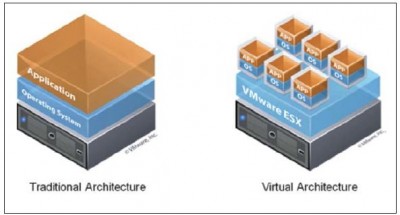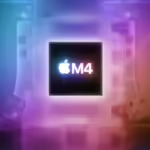Amazon makes Nvidia’s Grid visual computing technology widely available
By Kathleen Maher
Although Nvidia’s Grid was announced over a year ago at GTC 2012 and has seen some customer adoption and important partnerships with HP and Dell, among others, Nvidia put more meat on the bone with the Kepler rolled out last spring. Kepler is Nvidia’s first chip that has integrated support for remote computing. At Nvidia’s GTC developer conference this year, the company introduced the Visual Computing Appliance (VCA), a compact, low-cost 2U appliance that enables small companies to take advantage of Nvidia’s Grid technology. And Amazon has put the icing on the cake by providing access to Nvidia’s GPUs via its EC2, Elastic Compute Cloud web service available through Amazon Web Services (AWS).

So far, GPU resources are available in two instance types, G2 and CG1; both include Intel Xeon processors and Nvidia GPUs, which can be used for graphics applications or GPGPU compute applications. The G2 includes access to Nvidia Grid GPUs via the Kepler GK104 including 4 GB of video memory and the GPU’s on-board hardware video encoder. The CG1 instances offer Nvidia’s Tesla M2050 GPUs (Fermi GF100).
Amazon says the initial driver release for the G2 includes support for OpenGL 4.3, DirectX 11, CUDA 5.5, and OpenCL 1.1. The CG1 drivers offer support for CUDA 5.5, OpenCL 1.1, and DirectCompute. Both options provide access to the Grid SDK. Amazon says the popular use cases for G2 will be service-side graphics applications including game streaming and 3D application streaming. The CG1 offers capabilities on the GPGPU compute side including massively parallel tasks like computational chemistry, rendering, financial modeling, and engineering design.
Now that major puzzle pieces are in place, announcements are starting to flow, and they are coming first for G2 applications:
- Otoy announces its Orbx middleware software for streaming applications through the browser.
- Autodesk announces a relationship with Otoy to enable streaming workstation apps. Playcast deployed its cloud gaming system and demonstrated Warner Brothers Batman: Arkham City video game streamed to smart TVs.
- Mainframe2 demonstrated Adobe Photoshop running streamed to a browser.
- Argawi announced will take advantage of Amazon’s EC2 for GPUs to stream games and apps to mobile devices.
- Amazon announced AppStream, an in-house software for streaming apps.
The addition of GPU power to the Amazon web, says Amazon and Nvidia, expands the use of the Cloud from basic storage, data processing, and 2D applications to 3D, fully GPU-accelerated, interactive consumer and professional applications. The access GPU makes a software-as-service (SaaS) option available to vendors who might want to lease time on their software in addition to or instead of selling outright with a perpetual license.
Otoy and Autodesk team up to stream workstation apps
It won’t come as a surprise to anyone who is even mildly paying attention to this space that Autodesk has been among the first to stand up and raise its hand to declare itself fully prepared to take advantage of this opportunity.
Autodesk has collaborated with Otoy and Mozilla on ORBX.js. A JavaScript framework, ORBX.js enables 1080p60 cloud streaming to all HTML5 browsers without the use of plug-ins, browser-specific video codecs, thin-client installations, or native code dependencies. To demonstrate the potential of app streaming on Nvidia Grid, Otoy and Autodesk are collaborating on technology that offers Autodesk’s most popular design applications, including 3DS Max, Maya, and Inventor available through any modern web browser via an Otoy AMI. Otoy has also demonstrated Photoshop CS6 and games from Valve running in the browser.
To make it easy for software companies to deploy applications onto G2 instances, Otoy has enabled a Windows- and Linux-based Amazon Machine Image (AMI) with Otoy’s Orbx middleware. SaaS companies can install their applications into Otoy’s AMI and begin streaming to web browsers within minutes. In their press release, Nvidia praises Otoy’s Orbx AMI as the easiest way for software-as-a-service companies to access the video-streaming capabilities in Nvidia Grid.
Mainframe2 is another company taking advantage of Amazon’s G2 instances to stream applications. Currently it is demonstrating its product using Photoshop, but the company is very interested in also offering workstation apps for design and engineering. The company says their approach is notable because it is very easy and fast to access an app and get to work. Nvidia’s Phil Eisler singled out Mainframe2’s Photoshop implementation in his blog post, and Mainframe CEO Nikola Bozinovic says ISVs will have a likewise easy-to-use path to putting their software on Mainframe2 and making it available.
Nvidia is also talking about Playcast Media, which is taking advantage of the Amazon AWS G2 option to stream games. CEO Guy de Beer is taking a different route to his customers, he’s going where they live—the living room. Playcast is making-triple-A-class games accessible to gamers in the US and targeting their TV. The Playcast service has been available as a streaming service in Europe and Asia for three years and it already has enabled more than 650,000 gamers to play Batman Arkham City, Street Fighter Versus Tekken, and Sonic Generations. The company partners with service providers and lets them brand the streaming game service. Gamers can use existing connected devices and a generic game controller. Games are available as a monthly subscription at prices ranging from $7 to $13.
“Gamers are getting ready to spend billions on dedicated hardware and physical discs,” said de Beer. “That’s several hundred dollars per gamer. Our service takes advantage of the AWS cloud, as well as existing networks and devices, to stream the best games to consumer households via our media partners at a fraction of that cost and those savings can be passed down to the consumer.” Playcast Media is used by Bouygues in France and CJ in Korea, and is expected to be available for North American consumers via US media brands by the second quarter of 2014.

More to come
Amazon has figured out how to package its cloud services so that vendors can create products on Amazon’s infrastructure. This is just the first flush of applications announcing products, and we haven’t seen much on the GPGPU front yet either.





